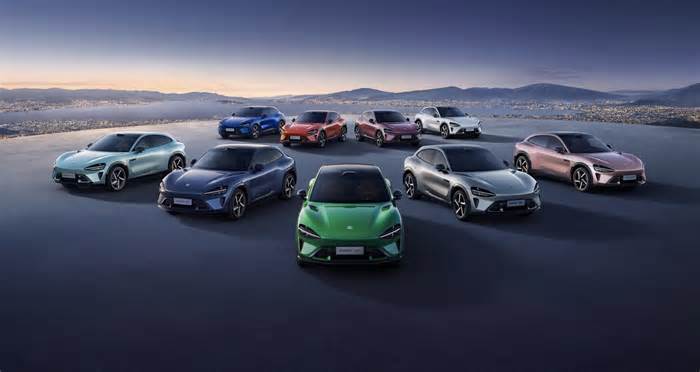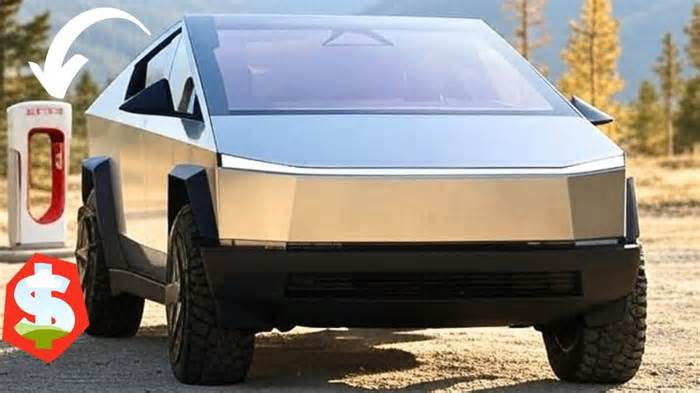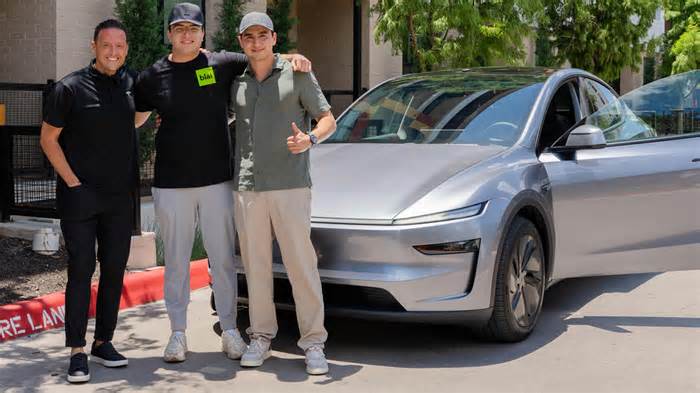
Tesla Semi: Can it really dominate the trucking industry? - FleetOwner
- by Fleet Owner
- May 28, 2024
- 0 Comments
- 0 Likes Flag 0 Of 5

John Hitch
Since Elon Musk first showed off a prototype in 2017, Tesla has been promising its Class 8 electric truck would change freight transportation in the U.S. Despite only delivering dozens of trucks to fleet customers over the past seven years, the EV automaker is still making promises about the Tesla Semi’s future dominance in trucking while the rest of the industry continues to focus on the real world.
Dan Priestley, Tesla’s senior manager of Semi truck engineering, said last week that the automaker plans to not just exist in the world of heavy-duty trucking but to dominate it.
“When we talk scale, we're talking big scale,” Priestley noted in front of a packed audience on the 2024 Advanced Clean Transportation Expo’s main stage at the Las Vegas Convention Center’s West Hall. He said the automaker’s Nevada Gigafactory would start serial production of the Class 8 battery-electric truck in 2026, with “an eventual target capacity of 50,000 units a year.”
This may invite skepticism in those following the Semi’s path to commercialization, as it would be a full decade from being announced (in 2016) to serial production. CEO Elon Musk unveiled a prototype in 2017, with production promised for 2019. The industry is still waiting on serial production as legacy OEMs are already delivering hundreds of Class 8 EVs to West Coast and East Coast fleets. Through it all, the Semi also averages 1.7 kWh per mile, he said.
At a later discussion, Priestley noted the Semi had been tested at negative-35 degrees F in Alaska and 120 degrees F in Death Valley.
“We really like to push the vehicle to its absolute limit,” Priestley said. “And it sweated, but it did really well.”
A key to the uptime is Tesla’s select group of service technicians and tools developed in-house, along with leveraging the company’s vertical integration and supply network, as well as vast amounts of experience in maintaining and servicing nearly 5 million light-duty EVs for over 15 years.
“We do our own training, and we developed physical as well as virtual information to allow the technicians to do their job effectively and ultimately get the product back into the world earning money as quickly as possible,” Priestley said.
Later on the stage, Priestley offered that, unlike many car dealers, Telsa does not target service as a major profit center for the company.
He said that light-duty dealers try to extract profit from lifetime vehicle service deals on the equipment they sell. But Tesla's focus, which does not include a traditional dealer network, is "not looking to do everything ourselves on the heavy-duty side,” he said.
Instead, fleets and third-party providers can share the maintenance load. This is already being done at Pepsi, and Priestly noted any shop can do wheels and tires. For proprietary technology, Priestley suggested Tesla could even send mobile maintenance trucks out.
“But if your fleet or your business has a service division that you want to empower and enable, we can figure out what that balance is between what you do versus what Tesla does, so we can scale it effectively and provide you with the right tools, physical or virtual, so you can take out those jobs and do so reliably and successfully,” Priestly told fleets.
Infrastructure and beyond
Ultimately, Tesla intends for the Semi to be a general tool, with potential uses including car hauling and refrigerated transport, as the tractor battery can also power the trailer. Truckload, LTL, and drayage are other duty cycles.
The next step is building out a larger charging network.
“This year, we are investing more than $500 million in new supercharger stations, expanding the network,” Priestley said. The Megachargers will not just be “behind the fence” at private locations such as the Gigafactory and Pepsi, but eventually, at public areas, Priestley likened to retail truck stops.
"We've deployed more than 50,000 DC fast chargers worldwide today, and we have really refined the way that we can do this quickly as well as cheaply,” stated Priestley, explaining this was done by driving cost down with prefabricated units, streamlined engineering and construction.
While the current cost for heavy-duty charging is $1,000/kW, if and when Telsa achieves economies of scale, they can slash that to $500/kW.
This article was originally posted on Fleet Maintenance.
About the Author
Please first to comment
Related Post
Stay Connected
Tweets by elonmuskTo get the latest tweets please make sure you are logged in on X on this browser.






 Energy
Energy


















